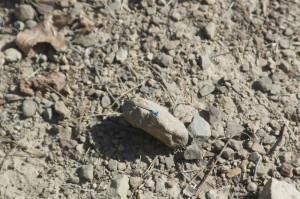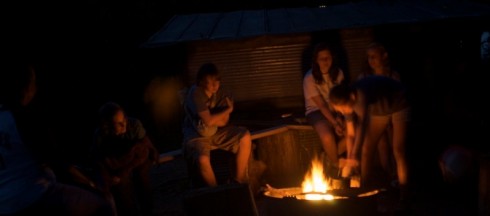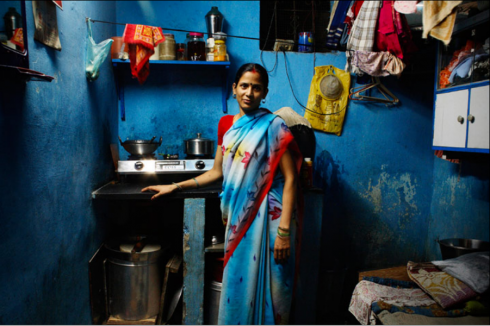The trailer for a documentary about what it’s like to live as a single parent, working on a single close-to-minimum wage paycheck, in the United States.
Tag: poverty
Millennium Development Goal Tracker

We covered the Millennium Development Goals in Environmental Science this past quarter. However, the big outstanding question was how close have we come to meeting any of the goals. Health Intelligence hosts an excellent, interactive map for tracking progress on the Millennium Development Goals.
A Night in the Slums (simulated)

One of the highlights of the Heifer Ranch trip was the chance for students to spend a night in their global village. It’s really a set of villages, each simulating a life in an under-developed part of a different developing country.

The Guatemalan house is pretty nice; it keeps you out of the elements, you have actual beds, and running water. The Thai houses are actually pretty awesome. They stand on stilts next to the open fields, giving good air circulation and elegant views. They remind me a lot of some of the older houses from where I grew up. The refugee camp, on the other hand is pretty decrepit. The slums aren’t much better but at least have one house with a wooden floor, though the door was so broken it was pretty useless.
Our students were assigned villages at random, but varying numbers were placed in each village to replicate the population densities more accurately. One adult was assigned to each village. We were supposed to act as if we were incompetent (not hard I know), either as two-year-olds or senile elders.
I ended up in the high population slums.

On the positive side, I was not the only adult there. Mrs H., who had joined our group with her daughter for the week of activities at Heifer, was also assigned to the slums. On the negative side, she and the girls commandeered the one “posh” building that had an actual floor to sleep on. The boys and I had to sleep on the hard, stony ground.
It didn’t help that one of the boys was “pregnant”. One person in each group been given a water balloon in a sling and told to keep it with them, safe, until dinner, when they would “give birth”, at which point the others in the “family” could help take care of the “child”. A key objective was for the child to survive until morning.
The boys scouted all the houses in the village and scavenged a large piece of metal grating to sleep on. It was not great, but it was doable. Better, at least, than the concrete-hard, uneven ground.

There was a lot more that happened on that night. None of the groups was given enough to be comfortable on their own. There was a lot of haggling, trading and even commando raids, but, in the end, they pulled together and made something of it.
The experience was quite useful, I think. Conditions were uncomfortable enough to register with the students, though a single night is not enough to really internalize all the challenges of urban slums where over one billion people spend their lives. But it does provide some very useful context for the poignant images of Jonas Bendiksen (Living in the Slums) and James Mollison (Where Children Sleep).

Appropriate Technology: Innovation with Light
Not a lot of light penetrates the galvanized steel roofs that are ubiquitous in slums around the world. Alfredo Moser came up with one ridiculously cheap solution (via the World Social Forum, 2011).
While this the kind of cheap, elegant solution I would go for in a heartbeat, I’m pretty sure my wife would veto. For the more stylistically conscious – and for people with a bit more money in their pockets – there are $2.00 LED lights advocated by The Appropriate Technology Collaborative (ATC). A lot of people in dire poverty live in the slums, but that’s not the case for everyone.
The ATC’s seems to focus on projects designed by university students and implemented in the third world. If they work, the designs are published with a Creative Commons license so that other Non Governmental Organizations (NGO’s) that work in poorer countries can use and distribute them. Their blog has a lot of good information. And, there’s also the Global Bucket project that I’m still keeping an eye on.
Living in the Slums

Jonas Bendiksen has an amazing website of photos, sounds and stories from life in slums in South America, Africa and Asia. It’s quite a poignant. You get wide-angled photos from far away and then the photographer steps closer to his subjects until you’re in a panorama of someone’s small apartment, hearing their story.
This cycle we’re working on social action.
Bendiksen’s work ties in well with Mollison’s Where Children Sleep.

Diverse bedrooms


To supplement our work on the fundamental needs of humans, we can add James Mollison’s poignant pictures in his book, Where Children Sleep. It ties in well with the Diverse China pictures.
You can find more of his images in LIFE.
Even without the text descriptions, the pictures are wonderfully composed and evocative. I think I’m going to have to add this one to our library.
An interesting project would be to have my students take their own pictures of their rooms. Just in the book, some of the contrasts are quite startling.

Character Amid the Ruins
People are made of flesh and blood and a miracle fibre called courage.
— Mignon McLaughlin, The Neurotic’s Notebook, 1960 (quote via The Quote Garden.)
The character of an individual, and even of a people, is best identified in periods of adversity. That was one of the things that came up when my students discussed ethics, morality and poverty. With all the talk of how the Japanese people are reacting to last week’s earthquake, with a relative lack of looting and criminality, it is worth visiting Jesse Walker’s article in Reason last year that really looked at how people really respond to disasters. It turns out, that from Haiti to New Orleans to San Fransisco in 1906, people are much more restrained and disciplined than we’re lead to imagine.
Walker reviews Rebecca Solnit’s book “A Paradise Built in Hell: The Extraordinary Communities That Arise in Disaster” which points out the “little utopias” that arise in disaster hit communities.
Walker also points out the incongruity between our expectations and actual observations:
It isn’t unusual for a TV reporter to get his facts wrong. It’s rarer for the images that accompany his dispatch to flagrantly contradict what he says. But on January 21, broadcasting in the aftermath of the earthquake that devastated Haiti, CNN correspondent Ivan Watson fretted about “chaotic crowds” as the camera showed people who were calm and patient. When Watson announced that we were watching a “chaotic scramble” onto a rescue ship, this was illustrated by a group of refugees carefully, methodically passing a baby onto the boat.
–Walker (2010): Disaster Utopianism on Reason.com
Surviving in Poverty
SPENT is an online game that challenges you to survive for a month while facing the choices of someone poor, living in the United States.
The choices are hard, but the game ties in well with the personal finance part of the curriculum, as well as the consideration of the wealth distribution.

